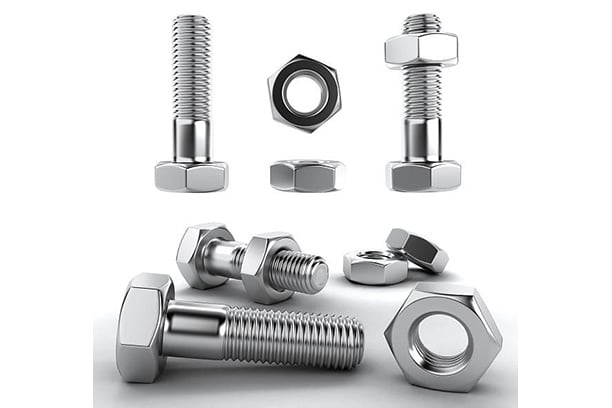Bolts are an important fastener, often assembled together with nuts. Using bolts with the correct size is critical to the work of various equipment and machines. Here, we’ll see a complete bolt guide that covers bolt definitions, types, size, and standard bolt size tables in both imperial and metric.
What Is A Bolt?
A bolt is a type of fastener that is used to hold two or more objects together. It consists of a cylindrical shaft with a head at one end and threading at the other end. The threads are used to screw the bolt into a corresponding tapped hole in one of the objects being joined, while the head of the bolt is used to apply torque to secure the bolt in place.
Different Types of Bolts
There are several different types of bolts that are used for various applications, each with its own specific design and features. Some common types of bolts include:
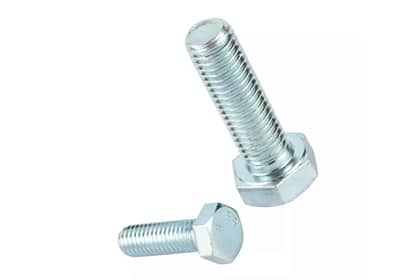
Hex bolts
Hex bolts, also known as hex cap screws, have a hexagonal head and are used in a wide range of applications. They are available in a variety of sizes and materials, including steel, stainless steel, and aluminum.
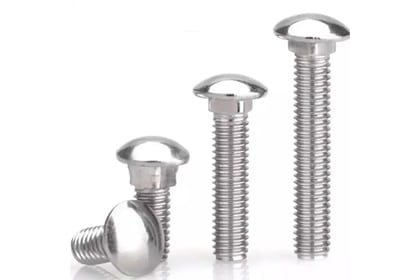
Carriage bolts
Carriage bolts have a round head with a square neck that prevents the bolt from turning while being tightened. They are commonly used in wood and metal applications where the bolt needs to be hidden.
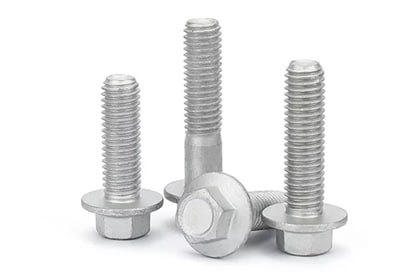
Flange bolts
Flange bolts have a flanged head that distributes the clamping force over a larger area, making them ideal for use in applications where the material being fastened is thin or brittle. They are often used in automotive and construction applications.
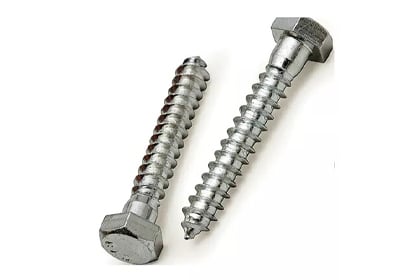
Lag bolts
Lag bolts, also known as lag screws, are large wood screws with hexagonal heads. They are used to secure wood to wood or wood to masonry and are known for their high holding power.
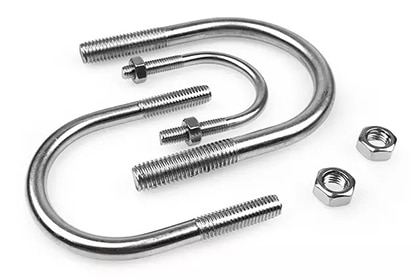
U-bolts
U-bolts are shaped like the letter “U” and are used to hold pipes, tubes, and other round objects in place. They are often used in automotive and industrial applications.
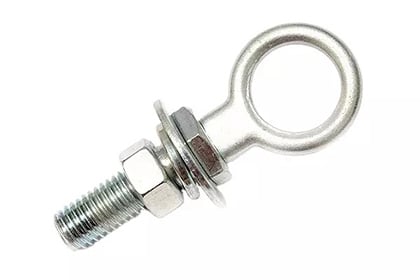
Eye bolts
Eye bolts are bolts with a loop or eye at one end that is used for attaching ropes, chains, or cables. They are commonly used in construction, marine, and outdoor applications.
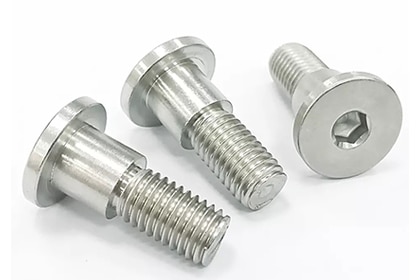
Shoulder bolts
Shoulder bolts, also known as shoulder screws, have a cylindrical body with a shoulder or step that allows them to be used as a pivot or as a means of attaching two parts together. They are often used in automotive and mechanical applications.
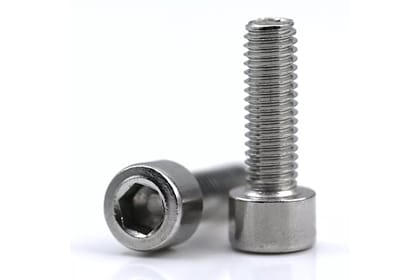
Socket head cap screws
Socket head cap screws have a cylindrical head with a hexagonal socket and are used in applications where a low profile is desired. They are commonly used in automotive, aerospace, and electronics applications.
Common Materials Available for Bolts
Bolts are available in a variety of materials, each with its own specific properties and characteristics. Some common materials for bolts include:
- Steel: Steel is the most common material used for bolts. It is strong and durable, but can rust if not properly protected. There are several different grades of steel bolts, each with its own specific strength and corrosion resistance properties.
- Stainless steel: Stainless steel bolts are resistant to corrosion and are often used in marine and outdoor applications. They are available in several different grades, each with its own specific properties and characteristics.
- Aluminum: Aluminum bolts are lightweight and have good corrosion resistance, but are not as strong as steel bolts. They are commonly used in automotive, aerospace, and marine applications.
- Brass: Brass bolts are strong and have good corrosion resistance, making them ideal for use in marine and outdoor applications. They are also commonly used in decorative applications due to their attractive appearance.
- Titanium: Titanium bolts are extremely strong and lightweight, making them ideal for use in aerospace and high-performance applications. They are also resistant to corrosion and have a high resistance to fatigue.
- Plastic: Plastic bolts are lightweight and have good corrosion resistance, but are not as strong as metal bolts. They are commonly used in applications where weight is a factor, such as in the aerospace industry.
Bolt Dimensions
In addition to these materials, bolts can also be coated or plated to improve their resistance to corrosion or enhance their appearance. Common coatings and platings for bolts include zinc, chrome, and nickel.
Bolts are available in a wide range of sizes to suit different applications. Bolt size is typically expressed as a combination of diameter and length, with the diameter being the distance across the bolt and the length being the distance from the bottom of the bolt head to the tip of the bolt.
Bolt size is typically expressed in either inches or millimeters. In the imperial system, bolt size is expressed as a fraction of an inch, with the diameter being the numerator and the length being the denominator. For example, a 1/4-inch by 3/4-inch bolt has a diameter of 1/4 inch and a length of 3/4 inch.
In the metric system, bolt size is expressed in millimeters, with the diameter being the first number and the length being the second number. For example, a 10mm by 50mm bolt has a diameter of 10mm and a length of 50mm.
In addition to size, bolts also have a thread pitch, which is the distance between the threads on the bolt. Thread pitch is typically expressed in either inches or millimeters, depending on the measurement system being used. The thread pitch of a bolt is important because it must match the thread pitch of the tapped hole in the object being fastened. If the thread pitch does not match, the bolt will not fit properly and may not hold the objects securely.
Bolt Size Chart
Let’s check out the standard bolt size chart below in metric or imperial with all the important dimensions of a bolt.
Imperial Bolt Size Chart
| Nominal Size | Bolt Diameter ‘D’ | Across Flats ‘A’ | Across Corners ‘B’ | Head Height ‘C’ | Thread Length ‘L’ | Transition Length ‘Y’ | |||||||
| Max (in) | Min (in) | Nominal (in) | Max (in) | Min (in) | Max (in) | Min (in) | Nominal (in) | Max (in) | Min (in) | ≤6 in | >6 in | Max (in) | |
| 1/4 | 0.25 | 0.245 | 7/16 | 0.438 | 0.428 | 0.505 | 0.488 | 5/32 | 0.163 | 0.15 | 0.75 | 1 | 0.25 |
| 5/16 | 0.3125 | 0.3065 | 1/2 | 0.5 | 0.489 | 0.577 | 0.557 | 13/64 | 0.211 | 0.195 | 0.875 | 1.125 | 0.278 |
| 3/8 | 0.375 | 0.369 | 9/16 | 0.562 | 0.551 | 0.65 | 0.628 | 15/64 | 0.243 | 0.226 | 1 | 1.25 | 0.312 |
| 7/16 | 0.4375 | 0.4305 | 5/8 | 0.625 | 0.612 | 0.722 | 0.698 | 9/32 | 0.291 | 0.272 | 1.125 | 1.375 | 0.357 |
| 1/2 | 0.5 | 0.493 | 3/4 | 0.75 | 0.736 | 0.866 | 0.84 | 5/16 | 0.323 | 0.302 | 1.25 | 1.5 | 0.385 |
| 9/16 | 0.5625 | 0.5545 | 13/16 | 0.812 | 0.798 | 0.938 | 0.91 | 23/64 | 0.371 | 0.348 | 1.375 | 1.625 | 0.417 |
| 5/8 | 0.625 | 0.617 | 15/16 | 0.938 | 0.922 | 1.083 | 1.051 | 25/64 | 0.403 | 0.378 | 1.5 | 1.75 | 0.455 |
| 3/4 | 0.75 | 0.741 | 1-1/8 | 1.125 | 1.1 | 1.299 | 1.254 | 15/32 | 0.483 | 0.455 | 1.75 | 2 | 0.5 |
| 7/8 | 0.875 | 0.866 | 1-5/16 | 1.312 | 1.285 | 1.516 | 1.465 | 35/64 | 0.563 | 0.531 | 2 | 2.25 | 0.556 |
| 1 | 1 | 0.99 | 1-1/2 | 1.5 | 1.469 | 1.732 | 1.675 | 39/64 | 0.627 | 0.591 | 2.25 | 2.5 | 0.625 |
| 1-1/8 | 1.125 | 1.114 | 1-11/16 | 1.688 | 1.631 | 1.949 | 1.859 | 11/16 | 0.718 | 0.658 | 2.5 | 2.75 | 0.714 |
| 1-1/4 | 1.25 | 1.239 | 1-7/8 | 1.875 | 1.812 | 2.165 | 2.066 | 25/32 | 0.813 | 0.749 | 2.75 | 3 | 0.714 |
| 1-3/8 | 1.375 | 1.363 | 2-1/16 | 2.062 | 1.994 | 2.382 | 2.273 | 27/32 | 0.878 | 0.81 | 3 | 3.25 | 0.833 |
| 1-1/2 | 1.5 | 1.488 | 2-1/4 | 2.25 | 2.175 | 2.598 | 2.48 | 1-5/16 | 0.974 | 0.902 | 3.25 | 3.5 | 0.833 |
| 1-3/4 | 1.75 | 1.738 | 2-5/8 | 2.625 | 2.538 | 3.031 | 2.89 | 1-3/32 | 1.134 | 1.054 | 3.75 | 4 | 1 |
| 2 | 2 | 1.988 | 3 | 3 | 2.9 | 3.464 | 3.306 | 1-7/32 | 1.263 | 1.175 | 4.25 | 4.5 | 1.111 |
| 2-1/4 | 2.25 | 2.238 | 3-3/8 | 3.375 | 3.262 | 3.897 | 3.719 | 1-3/8 | 1.423 | 1.327 | 4.75 | 5 | 1.111 |
| 2-1/2 | 2.5 | 2.488 | 3-3/4 | 3.75 | 3.625 | 4.33 | 4.133 | 1-17/32 | 1.583 | 1.479 | 5.25 | 5.5 | 1.25 |
| 2-3/4 | 2.75 | 2.738 | 4-1/8 | 4.125 | 3.988 | 4.763 | 4.546 | 1-11/16 | 1.744 | 1.632 | 5.75 | 6 | 1.25 |
| 3 | 3 | 2.988 | 4-1/2 | 4.5 | 4.35 | 5.196 | 4.959 | 1-7/8 | 1.935 | 1.815 | 6.25 | 6.5 | 1.25 |
Thread Pitch
| Bolt Size | Thread Pitch | |
|---|---|---|
| (in) | Coarse | Fine |
| 1/4 | 20 | 28 |
| 5/16 | 18 | 24 |
| 3/8 | 16 | 24 |
| 7/16 | 14 | 20 |
| 1/2 | 13 | 20 |
| 9/16 | 12 | 18 |
| 5/8 | 11 | 18 |
| 3/4 | 10 | 16 |
| 7/8 | 9 | 14 |
| 1 | 8 | 14 |
| 1-1/8 | 7 | 12 |
| 1-1/4 | 7 | 12 |
| 1-3/8 | 6 | 12 |
| 1-1/2 | 6 | 12 |
| 1-3/4 | 5 | – |
| 2 | 4-1/2 | – |
| 2-1/2 | 4 | – |
| 3 | 4 | – |
Metric Bolt Size Chart
In the metric system, bolt sizes are expressed in millimeters and are based on the diameter of the bolt. Metric bolt sizes are available in a range of diameters, from as small as 2mm to as large as 100mm or more. The length of the bolt is also expressed in millimeters and can vary based on the specific needs of the application.
Metric bolt sizes are typically designated using the following format: “Mx.x-y,” where “M” indicates that it is a metric bolt, “x.x” is the diameter of the bolt in millimeters, and “y” is the length of the bolt in millimeters. For example, a metric bolt with a diameter of 10mm and a length of 50mm would be designated as “M10-50.”
In addition to diameter and length, metric bolts also have a thread pitch, which is the distance between the threads on the bolt. The thread pitch is typically expressed in millimeters and is designated as “x.x,” where “x.x” is the distance between the threads in millimeters. For example, a metric bolt with a thread pitch of 1.5mm would be designated as “M10-50×1.5.” To explain more specifically, this can be divided into:
- ‘M’ indicates it is a metric bolt;
- ’10’ indicates the diameter of the bolt in millimeters
- ’50’ indicates the length of the bolt in millimeters
- ‘1.5’ indicates a metric bolt with a thread pitch of 1.5mm
Metric bolts are available in a variety of materials, including steel, stainless steel, and aluminum. They are used in a wide range of applications, including automotive, construction, and manufacturing.
| Size | Pitch | Across Flats ‘A’ | Across Corners ‘B’ | Head Height ‘C’ | Bolt Diameter ‘D’ | ||
| (mm) | Max (mm) | Min (mm) | Min (mm) | Max (mm) | Max (mm) | Min (mm) | |
| M5 | 0.8 | 8 | 7.78 | 9.2 | 3.5 | 5 | 4.82 |
| M6 | 1 | 10 | 9.78 | 11.5 | 4 | 6 | 5.82 |
| M8 | 1.25 | 13 | 12.73 | 15 | 5.3 | 8 | 7.78 |
| M10 | 1.5 | 16 | 15.73 | 18.4 | 6.4 | 10 | 9.78 |
| M12 | 1.75 | 18 | 17.73 | 20.7 | 7.5 | 12 | 11.73 |
| M14 | 2 | 21 | 20.67 | 24.2 | 8.8 | 14 | 13.73 |
| M16 | 2 | 24 | 23.67 | 27.7 | 10 | 16 | 15.73 |
| M18 | 2.5 | 27 | 26.67 | 31.2 | 11.5 | 18 | 17.73 |
| M20 | 2.5 | 30 | 29.67 | 34.6 | 12.5 | 20 | 19.67 |
| M22 | 2.5 | 34 | 33.38 | 39.3 | 14 | 22 | 21.67 |
| M24 | 3 | 36 | 35.38 | 41.6 | 15 | 24 | 23.67 |
| M27 | 3 | 41 | 40.38 | 47.3 | 16.7 | 27 | 26.67 |
| M30 | 3.5 | 46 | 45 | 53.1 | 18.7 | 30 | 29.67 |
| M33 | 3.5 | 50 | 49 | 57.7 | 20.5 | 33 | 32.61 |
| M36 | 4 | 55 | 53.8 | 63.5 | 22.5 | 36 | 35.61 |
Thread Pitch
| Size | Coarse (mm) | Fine (mm) | Super Fine (mm) |
|---|---|---|---|
| M2 | 0.4 | – | – |
| M2.5 | 0.45 | – | – |
| M3 | 0.5 | – | – |
| M3.5 | 0.6 | – | – |
| M4 | 0.7 | – | – |
| M5 | 0.8 | – | – |
| M6 | 1 | 0.75 | – |
| M7 | 1 | – | – |
| M8 | 1.25 | 1 | – |
| M10 | 1.5 | 1.25 | 1 |
| M12 | 1.75 | 1.5 | 1.25 |
| M14 | 2 | 1.5 | – |
| M16 | 2 | 1.5 | – |
| M18 | 2.5 | 1.5 | – |
| M20 | 2.5 | 1.5 | – |
| M22 | 2.5 | 1.5 | – |
| M24 | 3 | 2 | – |
| M27 | 3 | 2 | – |
| M30 | 3.5 | 2 | – |
| M33 | 3.5 | 2 | – |
| M36 | 4 | 3 | – |
| M42 | 4.5 | 3 | – |
| M48 | 5 | 3 | – |
| M56 | 5.5 | 3 | – |
Conclusion
This article concludes with the definition, common materials, different types, and standard bolt dimensions and specifications of bolts. Bolt size charts include bolt sizes and thread pitch in both imperial and metric units.

